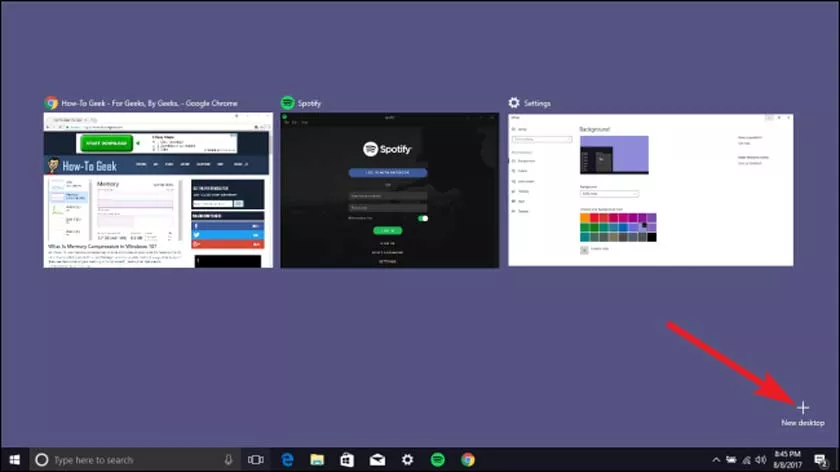Windows 10 is more than the latest offering from Microsoft to all of its users. It is designed to work as a complete operating system for all IT needs. And one of its paid features is its ability to manage multitasking within a single device. And speaking of multitasking, this article explains how to use multiple desktops in Windows 10.

Using multiple desktops in Windows 10 is not a new concept. In fact, some third-party applications offered this type of functionality in the days of Windows XP.
This time, the multiple workstation of the Windows 10 platform is now converted to native functionality in the operating system. And if you don’t know how to access it or how it works, let this article guide you.
How to use multiple desktops in Windows 10
We give full credit to the Windows developer for integrating this feature into the core of the Windows 10 system. Not only is it transparent, but it is also light on system resources. Let’s start.
Addition of offices
- There are two ways to add a new office. You can press the Windows button on the keyboard with the Tab button or click the Task View button on the Windows 10 taskbar.
- Now, if you have active windows or folders, you should see them all arranged side by side on the screen.
- At the top left of the screen, you will find a new button called New Desktop. Click on it, and you’ll see two desktop windows appear right at the top of the taskbar.
- You can add as many workstations as you want, or better yet, as many as your system can handle. This is how Windows 10 works on multiple workstations.
Transfer applications to another desktop
- If you want an application or folder to be moved to a new desktop, the process is similar. Press the Windows button on the keyboard with the tab button or click the Task View button on the taskbar.
- All applications and active folders should appear side by side on the screen.
- Hover the mouse cursor over the application you want to transfer to another desktop.
- Right-click on active applications to display the Move To button.
- Point your mouse on the Move to button to display the New desktop button.
- Click on the New desktop button and the active application will instantly create a new desktop and the application will be transferred there.
- If you have already created a new desktop, simply drag the active application or folder below and choose the desktop you want to transfer.
Switch between desktops
Switching between desktops is easy. There are two ways to do this.
You can choose to click on theTask Viewbutton and place the mouse cursor on the desired desktop. You can also pressWindowskey+ CTRL + left arrow or Windows key + CTRL +rightarrowkeys on the keyboard.
Personally, I prefer the shortcut key combination because it is much faster and feels more spontaneous, especially when you are already in control. Several workstations in Windows 10 have been properly integrated, which could increase the efficiency of your work.
Close an office
If you want to close an office from the multiple offices you have launched, simply move the mouse cursor over a office. The red “X” button will appear instantly. Click on it to close the desktop. You can do this for any active office that you have left open.
Close an active window on a desktop
- Closing a window in an active office is practically the same thing. All you have to do is hover over a workstation containing the active application or the active folder that you want to close.
- Once the mouse cursor touches the desktop, all of its active windows will appear.
- Now point the mouse cursor on the active window, application or folder until the ‘X’ button appears.
- Click the “X” button to close the application or folder.
Things to remember
If you have 2 GB of RAM on your system, it is best to choose a maximum of two desktop computers. If you have more RAM, you can add more desktops.
The ideal and recommended amount of RAM as a required system should be around 8 GB and above. With this amount of RAM, you can get better multitasking responses and less risk of lag. Remember that the minimum RAM requirement for multiple Windows 10 workstations is 4 GB.
You should also be aware of the power that your processor can handle. If you process or process more multimedia content, adding more multiple desktops in Windows 10 can significantly damage your processor.
But if you know your desktop computer is powerful enough, you can have more freedom. The number of workstations you wish to open will depend on your discretion.
In conclusion
The multiple desktop in Windows 10 is probably one of the best features of the Windows operating system. It provides a more organized space when you are working on multiple tasks of a different nature. This makes the screen much cleaner and less cluttered.
In the question today, what other features do you think might be useful in Windows 10? Let us know what you think in the comment section below. We would love to hear your thoughts and ideas.
